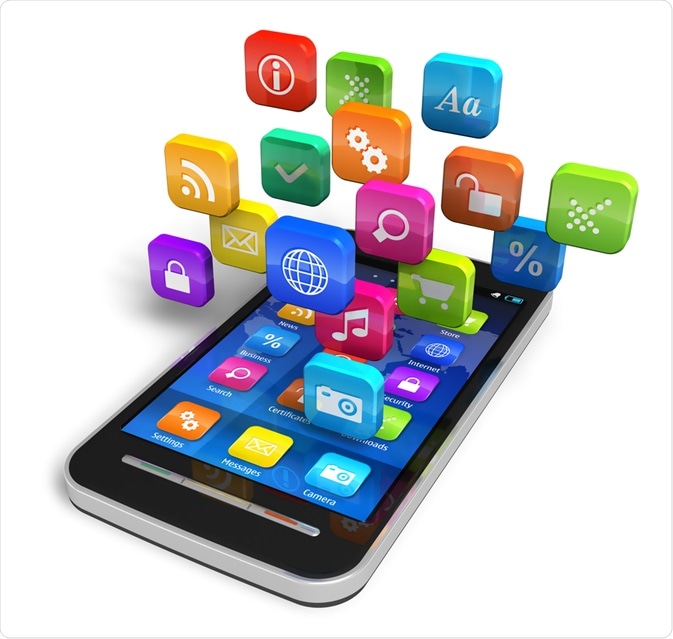The evolution of scientific smartphone apps
Today, smartphone apps exist for almost every need, summed up in Apple’s trademarked slogan “There's an app for that” which began running in 2009. There is really a sense that now, in 2020, you can find an app for pretty much anything, and the list is growing.

Image Credit: Oleksiy Mark/Shutterstock.com
In recent years, there is a rapid growth of smartphone apps in the scientific field. Beginning with basic apps for providing information in different scientific fields, such as astronomy, botany, biology, and more.
The offerings of scientific apps have now evolved to include apps that can handle complex analyses and data processing, as well as support research and experimental techniques, designed to aid professionals in the various scientific disciplines.
Recently, new apps claimed to analyze immunohistochemistry results have entered the market, and they can help scientists in a number of different ways.
Currently, the immunohistochemistry is seen as a leading diagnostic and prognostic tool for a range of diseases.
It helps doctors establish a diagnosis and tailored treatment plan. However, the downside of using this method is that the analysis of the samples is very time-consuming, and reading of the results is subjective, mostly relying on the skills of the person looking at the visual data.
Due to this, there is a definite need for automation of this process. An ideal scenario would be developing software that could automatically analyze data. It could be used either alongside subjective readings or completely replace them.
Unfortunately, the growing number of immunohistochemistry apps that have entered the market is lacking this capability, with just a few available apps offering diagnostic or analytical features. Below we discuss the major apps available in this field, along with what they claim they can do. Finally, we discuss what technology may lead to in the future.
Currently available immunohistochemistry apps
Of the apps that are currently available, it is useful to categorize them into one of two groups: productivity apps, and reagent apps.
Productivity apps like SoS IHC can assist pathologists in their work by providing a reference guide on tumor antigens.
HER2 Reader and IHC Navigator, offer diagnostic features. HER2 Reader’s main feature is tumor diagnostics by interpreting immunohistochemistry staining data and determining the possible tumor type of the sample being studied.
Other apps such as IHC Navigator help pathologists by providing reliable calculation tools to automatically generate antibody dilutions for diagnostics, with an option to save calculations for future studies.
The group of reagent apps available can help users choose the right antibodies for different applications, such as the Thermo Scientific Pierce Antibodies app.
Other apps, such as the one provided by Abcam, work more like a digital guide, giving researchers easy access to protocols. FlashKarte Histology Stains, work as a reference guide for common histological stains, and they may be found useful by medical students and histotechnologists.
Capabilities to develop in the near future
Overall, there is a limit to the number of apps offering any kind of diagnostic or analytical tool for immunohistochemistry studies.
This is due to the fact that analyzing the data collected by these kinds of studies is incredibly complicated.
Several years ago, a new open-source plugin was designed to automate histopathological sample analysis; however, apps with these capabilities need much more development.
Currently, there is still work underway exploring how an app can be developed to actually read the results of immunohistochemistry studies, although it is likely that we will have to wait several more years before mobile applications are built with this capability.
Sources:
- Varghese F, Bukhari AB, Malhotra R, De A. IHC Profiler: an open-source plugin for the quantitative evaluation and automated scoring of immunohistochemistry images of human tissue samples. PLoS One. 2014;9(5):e96801. Published 2014 May 6. DOI:10.1371/journal.pone.0096801
Further Reading